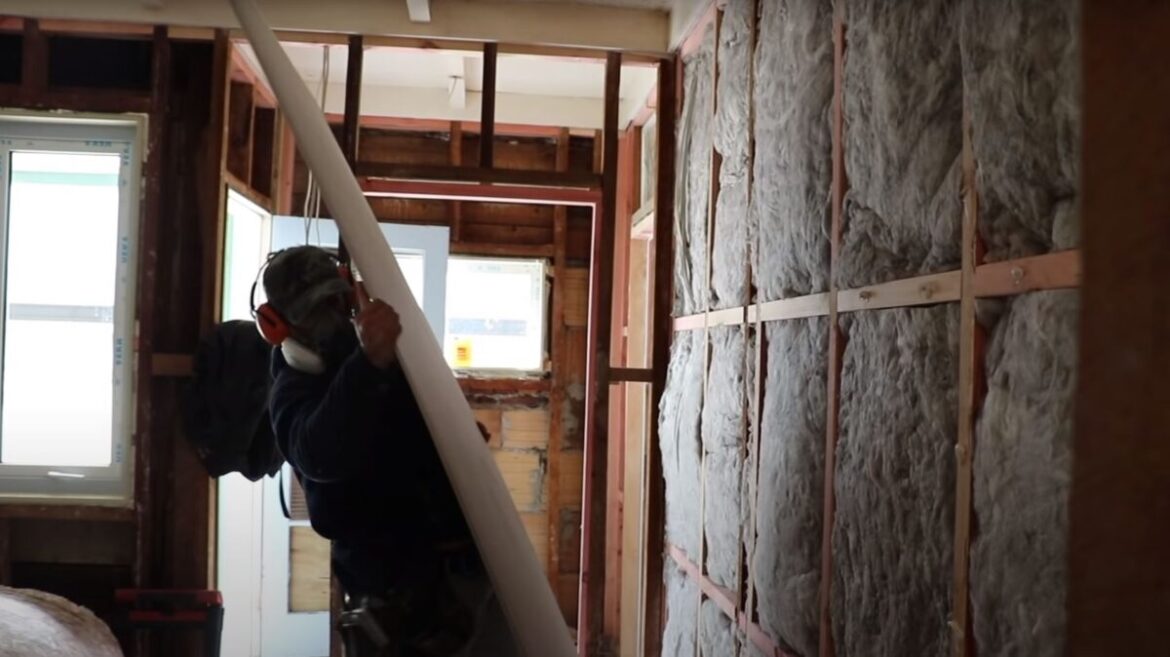Is Plasterboard Dust Harmful to Inhale?
Understanding Plasterboard Dust Exposure
The Composition of Plasterboard
Commonly known in the construction world as “gib board”, plasterboard is primarily made up of gypsum, a mineral known for its fire-resistant qualities. Gypsum is sandwiched between two layers of paper or fibreglass mats, which give the board its strength. When this board is cut or sanded, fine dust particles are released into the air, and these are what workers and residents might inadvertently breathe in.
Health Implications of Inhaling Plasterboard Dust
While plasterboard dust isn’t classified as toxic, regular and prolonged exposure can pose health concerns. Inhalation can lead to:
- Irritation: Dust particles can irritate the eyes, nose, and respiratory tract. Symptoms can include coughing, sore throat, and shortness of breath.
- Respiratory Problems: Long-term exposure can aggravate existing respiratory conditions like asthma or lead to chronic bronchitis.
- Gastrointestinal issues: Accidental ingestion, though less common, can result in stomach discomfort or long-term gastrointestinal issues.
Residents of Mount Wellington, given its thriving construction scene, should be especially aware of the importance of managing plasterboard dust when renovations or new constructions are underway.
Safety Measures to Counteract the Risks
The key to managing plasterboard dust lies in preventing its spread and limiting exposure. Essential safety measures include:
- Ventilation: Always ensure that workspaces are well-ventilated. This helps disperse the dust and reduces its concentration in the air.
- Dust extraction tools: Using tools equipped with dust extractors or vacuum systems minimises the dust released.
- Personal Protective Equipment (PPE): Wear masks, especially N95 masks, to prevent inhalation. Safety goggles can protect the eyes from irritation.
- Regular Cleaning: At the end of each workday, especially in densely populated areas like Ponsonby, it’s vital to clean up the workspace, ensuring no residual dust affects inhabitants.
Gib Board Varieties and Their Characteristics
| Type of Gib | Benefits | Disadvantages | Use Cases | Material Ingredients | Weaknesses | Flammable Rating | Mitigating Measures |
| Standard Gib | Cost-effective; Versatile | Not moisture-resistant | General walling | Gypsum, Paper | Moisture sensitivity | Low | Use in dry areas |
| Wet Area Gib | Moisture-resistant | Slightly costlier | Bathrooms, Kitchens | Gypsum, Fibreglass mat | Higher cost | Low | None required |
| Fireline Gib | Enhanced fire resistance | Premium pricing | Areas requiring fire protection | Gypsum, Fire-resistant additives | Premium price | Very Low | None required |
| Sound Bloc Gib | Reduces noise transmission | Premium pricing | Home theatres, Bedrooms | Gypsum, Sound-insulating layers | Premium price | Low | None required |
| Eco-friendly Gib | Sustainable; Lower carbon footprint | May have higher cost | Environment-conscious projects | Recycled gypsum, Sustainable materials | Potentially higher cost | Low | None required |
A Deep Dive into the Science Behind Plasterboard
The central component of plasterboard, gypsum (CaSO4·2H2O), undergoes a heating process to remove its water content, turning it into a powder (CaSO4·0.5H2O). When manufacturing plasterboard, water is reintroduced, setting the gypsum. This water content is what gives plasterboard its fire resistance. When exposed to fire, the water within the board vaporises, cooling and protecting the surrounding structures. This property is enhanced in fire-resistant boards with added ingredients to boost this protective effect.
When it comes to the health implications of plasterboard dust, the key concern isn’t the gypsum itself, but rather the fine particulate matter. When inhaled over long periods, any fine dust can lead to respiratory complications due to the body’s inability to effectively clear these fine particles from the lungs.
Choosing the Right Plasterboard for Your Auckland Project
With several gib board options available in Auckland, it’s essential to select the right type for your specific needs. Whether you’re renovating a vintage villa in Mount Wellington or building a modern home studio in Ponsonby, understanding the properties and best-use cases for each type of board is vital.
Should you need expertise in plasterboard selection, installation, or any concerns related to plasterboard dust, the team at Your Plasterers Auckland is equipped with the knowledge and experience to ensure your project is both safe and meets the highest quality standards.
Plasterboard Dust: Key Questions Answered
Is inhaling plasterboard dust toxic?
While plasterboard dust isn’t classified as toxic, prolonged and regular exposure can cause respiratory irritation and exacerbate existing respiratory conditions.
What are the primary health concerns associated with plasterboard dust?
The main concerns include eye, nose, and throat irritation, potential exacerbation of respiratory conditions like asthma, and gastrointestinal issues if ingested.
How can I minimise plasterboard dust when working?
Using dust extraction tools, ensuring proper ventilation in the workspace, wearing appropriate Personal Protective Equipment (PPE) like masks and goggles, and cleaning the workspace regularly can effectively minimise plasterboard dust.
Are there different health risks associated with various types of gib boards?
While the primary component, gypsum, remains consistent, different additives or treatments in specific gib board types might pose varied risks. Always refer to the manufacturer’s safety data sheets for specific information.
Is the gypsum in plasterboard harmful?
Gypsum itself isn’t harmful and is even used in various products like food and medicine. The concern arises from the fine particulate matter of the dust when plasterboard is cut or sanded.
How often should I replace my PPE when working with plasterboard?
This largely depends on the extent of exposure. However, masks should be replaced when they become clogged or moist. Safety goggles should be cleaned regularly and replaced if scratched or damaged.
Who can I consult if I have concerns about plasterboard in my Auckland home?
Your Plasterers Auckland is a reputable source of expertise on plasterboard. They can provide guidance on installation, safety practices, and address any concerns you might have about plasterboard in your home.

